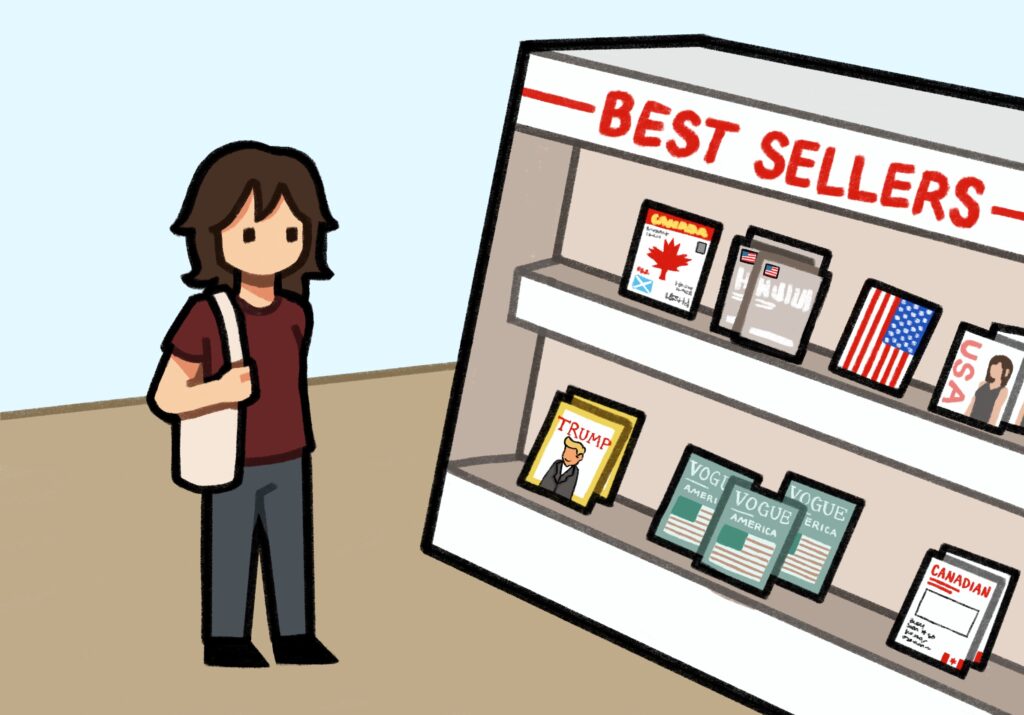How a recent purchase from an American company has changed Canadian magazine visibility

“The last time I flew, I was really disappointed at what I was seeing in terms of what the options were,” says Chris Radley, executive director of the national trade organization Magazines Canada.
This is a symptom of a deeper problem—a shrinking Canadian magazine industry. “The consumer decides what is on the shelf,” says Scott Bullock, a freelance newsstand and retail sales consultant. “They’re going to put magazines forward that people are buying,” he says.
Unfortunately, those magazines aren’t often Canadian.
A dramatic shift in the magazine rack business in Canada won’t help. Accelerate360, a marketing and media company based in South Carolina, has taken over two of the largest magazine distributors, Comag Marketing Group (CMG) and TNG Canada. The deal gives the American company exclusive distribution rights to major Canadian retail spaces like Shoppers Drug Mart, which raises concerns about the future of Canadian voices on domestic shelves. Radley says this is especially worrisome in rural locations.
Currently, Magazines Canada works with two Ontario distributors, including one based in Brampton that distributes to small retailers across Canada that bigger distributors don’t normally work with due to low sales. What’s more, under the ownership of accelerate360, Magazines Canada had to step away from talks with TNG and CMG to comply with funding guidelines from sponsors that require partnerships with Canadian-owned companies.
Magazines Canada serves registered members that must have a 51 percent Canadian-owned publication and content written by 80 percent Canadians. While Magazines Canada may not have the same influence as its American competitors, it remains committed to prioritizing Canadian publications in retail spaces nationwide. As a not-for-profit association, it strikes a specific niche. “Our purpose is to help give smaller publishers the opportunity to get into newsstands,” says Radley. “We’re not heavily sales-driven.”
Bullock suggests consumer spending still plays the same role in shaping magazine racks. “If it’s a Canadian magazine and people buy it, it’ll stay on the rack,” he says. “If it’s an American magazine and it’s not selling, it’ll come off the rack.”
Bullock says the difference between each country’s economy plays a role, and eliminating American publications would not necessarily increase revenue for the Canadian industry. “American publishers have deeper pockets and longer press runs, which means their unit costs to print each magazine is lower.” Without American magazines, he added, our newsstands would cease to be financially viable.
American or Canadian, Bullock believes the future of magazine racks will come down to the consumer’s wallet. “It wasn’t that long ago when tablets were coming out, and everybody thought that print was going to be crushed by eBooks. That didn’t happen. The same predictions were made about magazines—and we’re still here.”
About the author
Andrew is in his final year of the Master of Journalism program. As a former film school student, he has a deep passion for arts journalism. He has been published in Exclaim!, Today’s Parent, and his own Substack, The Ferryman. Outside of reporting, Andrew can be found breaking down shot compositions on his Letterboxd.






